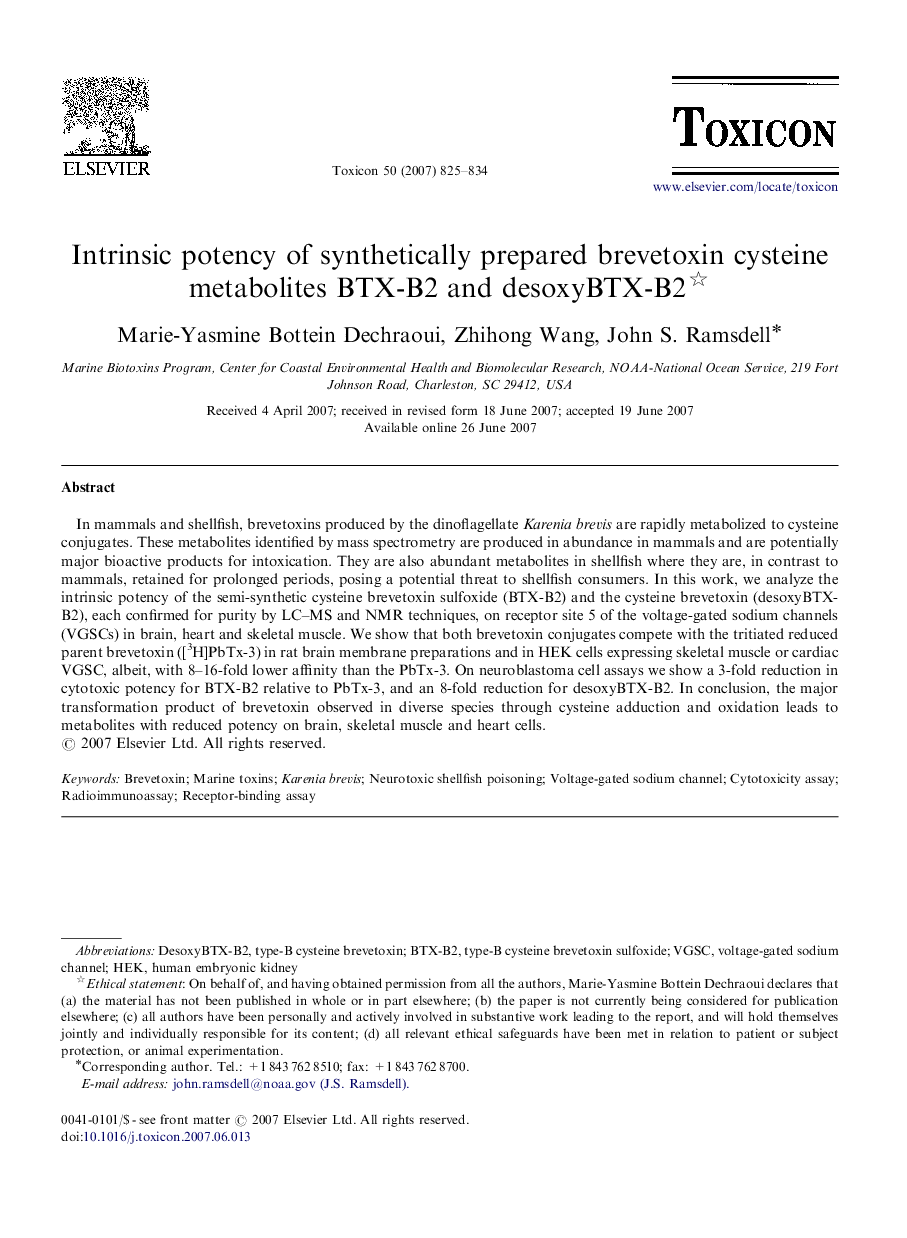| Article ID | Journal | Published Year | Pages | File Type |
|---|---|---|---|---|
| 2066789 | Toxicon | 2007 | 10 Pages |
In mammals and shellfish, brevetoxins produced by the dinoflagellate Karenia brevis are rapidly metabolized to cysteine conjugates. These metabolites identified by mass spectrometry are produced in abundance in mammals and are potentially major bioactive products for intoxication. They are also abundant metabolites in shellfish where they are, in contrast to mammals, retained for prolonged periods, posing a potential threat to shellfish consumers. In this work, we analyze the intrinsic potency of the semi-synthetic cysteine brevetoxin sulfoxide (BTX-B2) and the cysteine brevetoxin (desoxyBTX-B2), each confirmed for purity by LC–MS and NMR techniques, on receptor site 5 of the voltage-gated sodium channels (VGSCs) in brain, heart and skeletal muscle. We show that both brevetoxin conjugates compete with the tritiated reduced parent brevetoxin ([3H]PbTx-3) in rat brain membrane preparations and in HEK cells expressing skeletal muscle or cardiac VGSC, albeit, with 8–16-fold lower affinity than the PbTx-3. On neuroblastoma cell assays we show a 3-fold reduction in cytotoxic potency for BTX-B2 relative to PbTx-3, and an 8-fold reduction for desoxyBTX-B2. In conclusion, the major transformation product of brevetoxin observed in diverse species through cysteine adduction and oxidation leads to metabolites with reduced potency on brain, skeletal muscle and heart cells.
